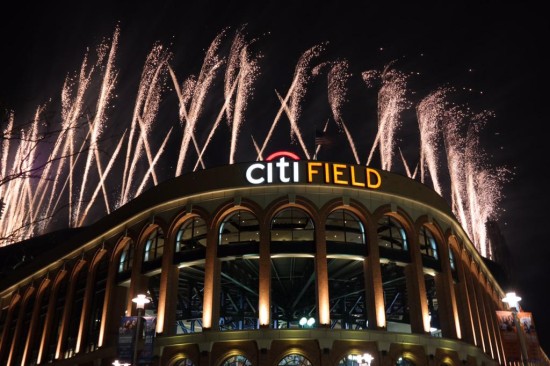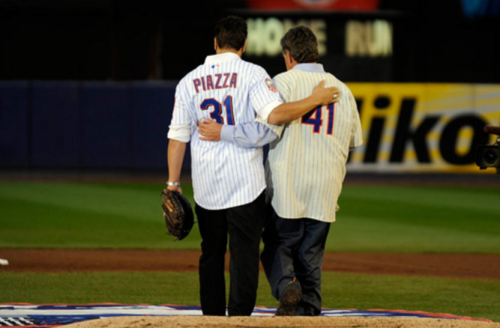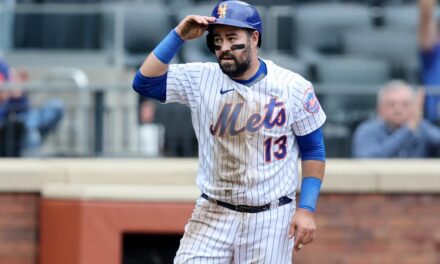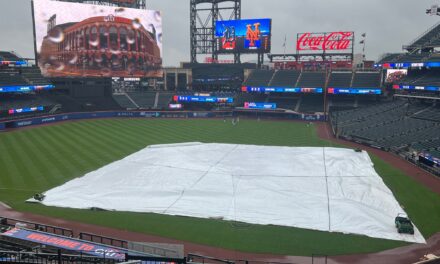
Attending a Mets game at Citi Field, even as it is, is something that everyone deserves to experience.
Currently the fourth-newest big league ballpark, it boasts a myriad of features. The variety of different food options, the Coca-Cola Corner, and the Good Humor Fan Fest area are just a few of the amenities that have enticed both the die-hard fan and layperson over the past nine seasons. Just a few years removed from the tragic events of Game 5 of the 2015 World Series, I can still honestly say I have never had a bad time at Citi Field.
However, there is a baseball-specific aspect of the Citi Field experience I feel we are all missing out on that needs to be addressed and corrected. Don’t worry, Shake Shack will still be here when I’m finished.
Canonically speaking, the Mets were founded as a means of replacing the Brooklyn Dodgers and New York Giants, both of whom moved to the West Coast in 1957, as demonstrated through their predominantly blue and orange uniforms, fanbase lineage, and, unsurprisingly, their new ballpark, which is physically modeled after Ebbets Field.
Ownership’s collective decision to not only adopt the traditional Brooklyn façade for their ballpark but also to install green seats and implement a rotunda dedicated to the life, trials, character, and career of Jackie Robinson are rooted in Fred Wilpon’s own nostalgic affinity for the Dodgers.
On the surface, it makes sense that the Mets would take an opportunity or two to appeal to a division of fans in danger of being phased out by time and age. However, the attachment raises some red flags that I’m willing to both point out and resolve.
A Bleacher Report article written by Dan Siegel in 2008 discusses the protests originally waged by the “New York Giants Baseball Nostalgia Society,” and it’s hard to argue with their rationale, which still holds water as we enter our 10th season with Citi Field and have yet to witness much of any sort of Giants-style tribute anywhere around the ballpark. The Mets have also come under fire for including Sandy Koufax jerseys in the ballpark clubhouse stores, even though Koufax never actually donned the blue and orange.
Even as a descendant of Brooklyn Dodgers fans, I strongly feel that Citi Field is far too closely resemblant of a shrine to the Dodgers and their history, and as a result also erases a lot of what made watching the Mets at Shea Stadium such an endearing experience. Even if it too lacked discernable ties to the history of the New York Giants, Shea was at least unique to the Mets, the team fans paid to watch and worship.

The orange and blue seating vibrated through the park, day and night. The iconic home run apple and skyline decorations in right field actually came to the new ballpark with the team in 2009. It was a dump, a lot of like the franchise in its volatilities from lovable losers to gloriously arrogant dirt-dogs and then to just plain unwatchable, but as Todd Pratt once said, “it was our dump.” Fans would trek the dingy ramp and put up with mediocre concessions because it was all part of a thrilling experience.
As I (semi) jokingly alluded to earlier, I’m not asking that we dismantle everything that makes Citi Field appealing on the surface and go back to the grimy ways of Shea. The food options, kid-friendly activities, and general cleanliness are all crucial to the new fan experience. Not much can be done about the physical layout of the stadium, and I can understand why the impact Jackie Robinson had on baseball and the civil rights struggle (not only in New York but throughout America) deserves its own space.
However, the Mets have also been in baseball for 56 years, and still do not have a statue commemorating anybody from within the organization.
There’s nowhere my grandparents can go to relive and bask in the euphoric, miraculous successes of the 1969 team, which in my opinion defined both the resilient franchise and the persistent fans. It wouldn’t take away from Fred Wilpon’s attachment to Brooklyn, for example, to at least erect a statue commemorating the accomplishments of Gil Hodges.
Even the addition of statues to commemorate fan favorites Tom Seaver and Mike Piazza outside the stadium would make fans very happy.
Perhaps a space on the Excelsior/promenade level can be used to acknowledge players like Duke Snider and Willie Mays, who actually made noise on both ends of the New York baseball time spectrum. It would take a grand total of two months over the offseason to paint the seats orange and blue.
I want to wrap things up by reaffirming that I understand and appreciate why the Mets wanted to appeal to their older fans and pay tribute to the social implications of Jackie Robinson’s barrier-breaking career.
I also believe, however, especially when I think about how fans treated and admired Shea Stadium for what it represented, that it would be smart of ownership to take inventory of how they can improve a ballpark that, fence renovations aside, has not changed much since its construction.
















